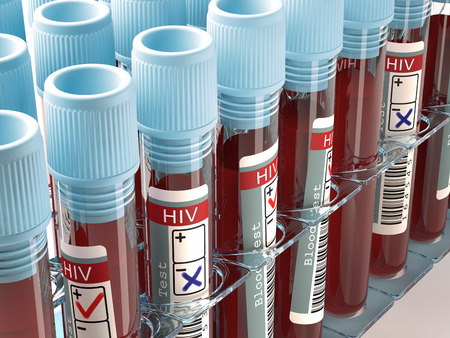HIV cases among Filipinos continue to rise, says DOH

FILE PHOTO: Oxford researchers announce in 2022 the discovery of a highly virulent strain of HIV that has been lurking in the Netherlands for decades, but because of the effectiveness of modern treatments, is “no cause for alarm.” STOCK IMAGE/INQUIRER FILES
MANILA, Philippines — HIV or human immunodeficiency virus infection among Filipinos continues to increase, with 3,410 new cases as of March this year, the Department of Health (DOH) said Friday.
“Of these newly diagnosed cases, ages ranged from less than one year old to 66 years old with a median of 28; eight out of 10 (81 percent) were MSM (males having sex with males),” it said in a statement.
The DOH added that the latest count includes 82 reported deaths.
In March alone, new HIV infections rose by 1,224, including 12 reported deaths, the health department pointed out.
READ: Nearly half of new HIV cases in PH are teens
Article continues after this advertisementThe month’s fresh cases consisted of individuals less than one to 55 years old, with a median age of 28—nearly half, or 46 percent, aged 25 to 34 and 31 percent, aged 15 to 24.
Article continues after this advertisementOverall HIV cases since 1984 swelled to over 129,000
In terms of overall numbers, the DOH said 129,772 diagnosed cases of HIV have been recorded in the country from 1984 to March 2024, based on data from the HIV and AIDS and antiretroviral therapy Registry of the Philippines.
The majority of the count, or 82 percent, involved MSMs; two percent were people who inject drugs, 0.2 percent were females engaging in transactional sex, and 0.3 percent were children.
“Notably, 89 percent of new infections occurred among MSM, with nearly half (47 percent) of the new infections from the youth aged 15 to 24 years old,” the DOH explained.
Seventy-four percent of the total number of Filipinos infected with the virus were recorded in the regions of Metro Manila, Central Luzon, Calabarzon, and Central Visayas.
Meanwhile, among the 122,255 diagnosed cases who are still alive, only 78,633 (64 percent) are on treatment with antiretroviral therapy.
READ: Dismissal of HIV positive employee is illegal, says SC
Infections to rise sans prevention
The DOH then warned that based on the projections of the AIDS Epidemic Model (AEM), it expects HIV infections to continue rising to 36,700 by 2030.
“Additionally, the projected number of Filipinos living with HIV may increase significantly by 2030, from an estimated 215,400 in 2024 to 401,700, should there be no improvement in the services for HIV/AIDS prevention in general and PLHIV (people living with HIV) support in particular,” it said.
Because of this, the DOH urged the public to seek help from general primary care facilities and HIV treatment hubs to manage and improve the quality of life of those living with HIV.
It also committed to prioritizing the well-being of people living with HIV and AIDS amid the commemoration of the International AIDS Candlelight Memorial (IACM) on May 19.
“The data we have shows the way for what we do. Better health literacy, including age- and culture-appropriate information and commodities for safe sex, routine HIV testing at primary care, and early access to antiretrovirals are clear directions to take,” Health Secretary Teodoro Herbosa said in the same statement.
“The best remembrance we can do for IACM is to gather the light of our collective talents and resources, and scatter this light to scale up evidence-based solutions to our problems in HIV/AIDS ” he added.
As of May, the country has 224 treatment hubs and primary HIV care facilities nationwide, according to the DOH.